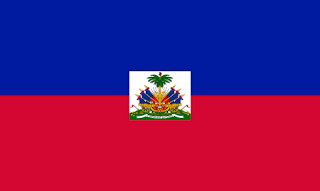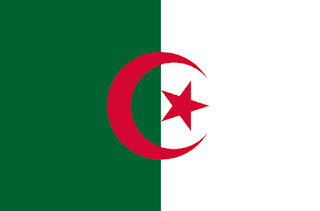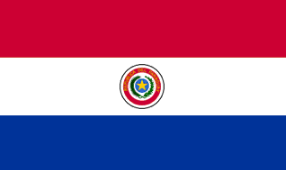FACTS ABOUT HAITI
AMAZING FACTS ABOUT HAITI
1.
The
official name of Haiti is the “Republic of Haiti”.
2.
Port-au-Prince is the capital city of Haiti.
3.
The
total population of Haiti is 10,646,714.
4.
The
natives of Haiti are called Haitians.
5.
The
Haitian gourde (HTG) is official currency of Haiti.
6.
Haiti
only shares a border with Dominican Republic.
7.
Haiti
is the poorest country in the Western Hemisphere, and it is also the
third-largest country in the Caribbean.
8.
In
1492, Christopher Columbus landed on the island and named it Hispaniola. A
monument of Christopher Columbus stands on the central square of Haiti’s
capital, Port-au-Prince, which is home to 20% of the country’s population.
9.
Columbus’
first sight of Haiti gave him the impression that he found India or Asia.
10.
Haiti
is the second oldest independent nation in the Western Hemisphere after The
United States. It gained its independence from France in 1804.
11.
It
was ruled by seventy different dictators between 1804 and 1915.
12.
Soccer
is Haiti’s national sport. They first competed in the World Cup in 1974.
13.
The
majority of Haitians love to gamble. They are even known to beg gods to reveal
the winning lottery numbers during voodoo ceremonies.
14.
Cock
fighting is also very popular in Haiti. The winner of the fight takes home $67,
which is almost a month’s salary for someone. Raw meat and hot pepper soaked in
rum is fed to the cocks to make them tough and aggressive.
15.
Haiti
is also one of the most deforested nations of the world. Poor agricultural
practices, overgrazing, intensive demand for charcoal and scarcity of land are
the leading causes.
16.
The
largest mountaintop fortress in the Western Hemisphere is also in northern
Haiti – the Citadel.
17.
Haiti’s
highest peak is the Pic la Selle at 8,793 feet (2,680 meters) above sea level.
18.
Haiti
has the most mountains of any Caribbean nation.
19.
Unfair
labor practices are prevalent in the country, and the majority of people are
jobless. Poor road conditions have had disastrous effects on farmers who face
serious problems in taking their goods to markets and towns.
20.
Literacy: in Haiti; only 60.7% of its population can
read and write.
21.
Haiti
is at the bottom among North American countries in the World Economic Forum’s
Network Readiness Index (NRI). This rating is an indicator determining the
country’s technology and information development. Mobile phones and internet
connections are reserved for the wealthy minority and business interests in the
capital.
22.
Sanitation
and water supply are two major challenges for Haitians. Pollution from human
and other waste is prevalent in most of the Haitian rivers. Diseases including
typhoid and hookworm are common in the region.
23.
One
in 50 people in Haiti is affected with HIV/AIDS.
24.
The
sixth-largest death toll in history happened in Haiti in 1963, when Hurricane
Flora hit it, causing almost 8000 deaths.
25.
Haiti
is also known for its illegal drug business with its clients spread all over
Central and South America, Europe and the United States. Human trafficking,
especially of children, is also prevalent.
26.
50%
of the nation’s wealth is owned by approximately 1% of Haitians.
27.
Corruption is another potential threat
to the country and its citizens. It is ranked at the 159th spot out of 176 countries
listed by Transparency International. Somalia is the most corrupt country in
the world and sits at the 176th spot.
28.
Anemia is common among small children
between the ages of six months and five years.
29.
Smallpox was also detected for the first
time in Haiti in 1507. At that time, the country was known as Hispaniola.
30.
There is just one public university in
Haiti: the University of Haiti in Port-au-Prince, founded in 1944. Wealthy
students prefer overseas educational institutions and universities.
31.
A cholera outbreak in the country in
2010 caused the death of more than 8,900 people, and affected 733,000 others,
lasting until 2015.
32.
Haitian children are prone to deaths, as
more than 10% of them die before reaching the age of five. Half of its children
are unvaccinated.
33.
Only 40% of its population has access to
basic health care. It is also the most densely populated country in the Western
Hemisphere, with 747 people per square mile.
34.
The average per capita income in Haiti
is very low. It is $480 a year with 80% of nationals living below the poverty
line.
35.
Haiti had more than 430,000 orphans in
the region before the 2010 earthquake. The high number of these orphans is also
attributed to violence and AIDS.
36.
The majority of Haitians’ income is spent
on food. Access to other life amenities is neither readily available, nor they
can financially afford it. Rural areas in Haiti account for 79% of its
population.
37.
Out of the 14 airports in Haiti, only
four have paved runways. Coffee is the main export crop.
38.
Haiti is the only other nation in the
Americas to have French as their official language. Wondering what is the other
nation? It is Canada.
39.
Haiti was once a haven for pirates from
the Caribbean. Haiti had gold mines and easy escape routes for the pirates, and
they (Haitians) also served as local laborers for mining and plantation work by
the pirates.
40.
Gourde, Haiti’s currency, is named after
a plant called ‘gourd.’
41.
French and Haitian Creole are the
official languages of Haiti.
42.
Christopher Columbus is also buried in
Haiti in the Cathedral of Santa Maria.
43.
Slaves were sold by Haiti to other
countries, which brought them great wealth at the time.
44.
The 2010 earthquake caused devastation
to such an extent that as per experts, it will take decades to rebuild the lost
infrastructure to support: health, governance, agriculture and security. It
also claimed the lives of more than 200,000 Haitians.
45.
Haiti Exports:
apparel, manufactures, oils, cocoa, mangoes and coffee.
46.
Haiti Imports:
food, manufactured goods, machinery and transport equipment, fuels and raw
materials.
47.
The internet country code for Haiti is .ht.




Comments
Post a Comment